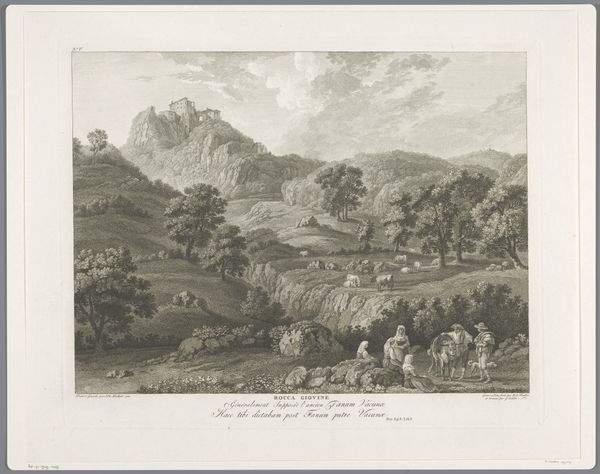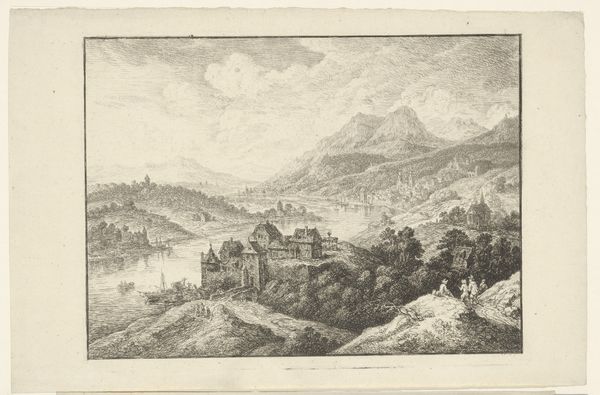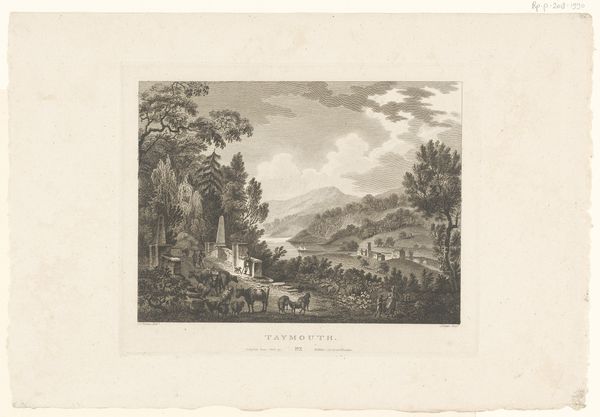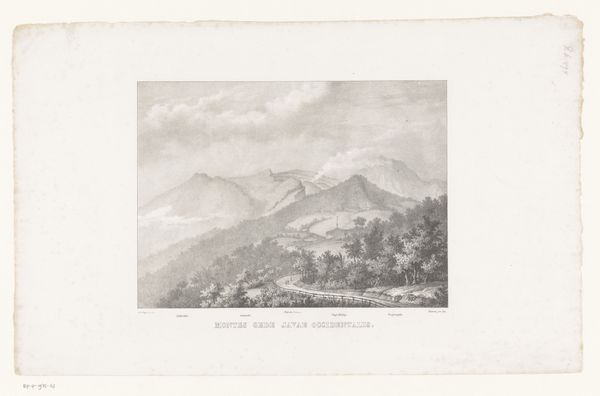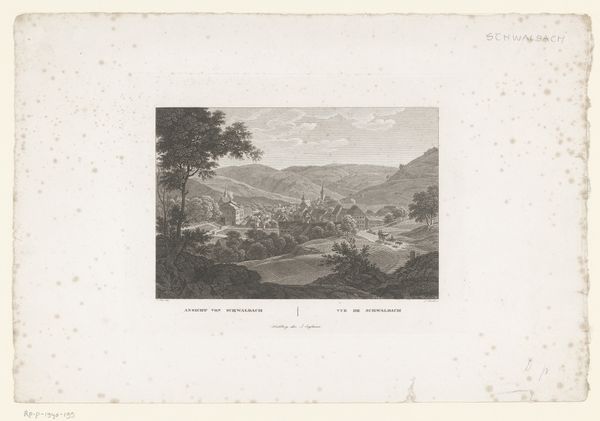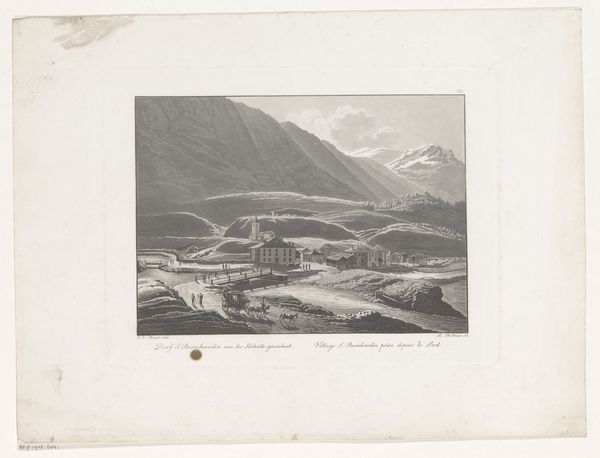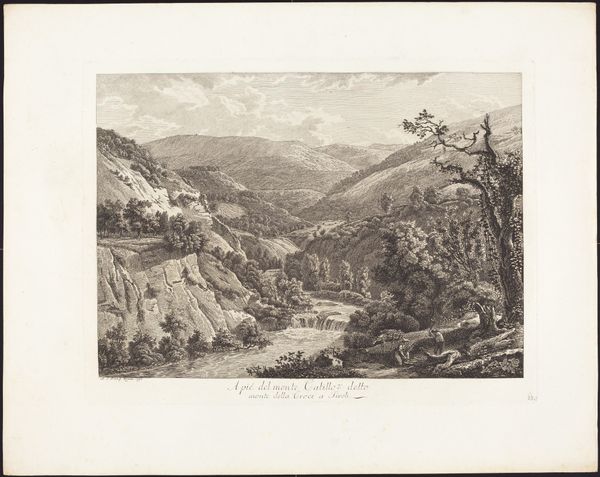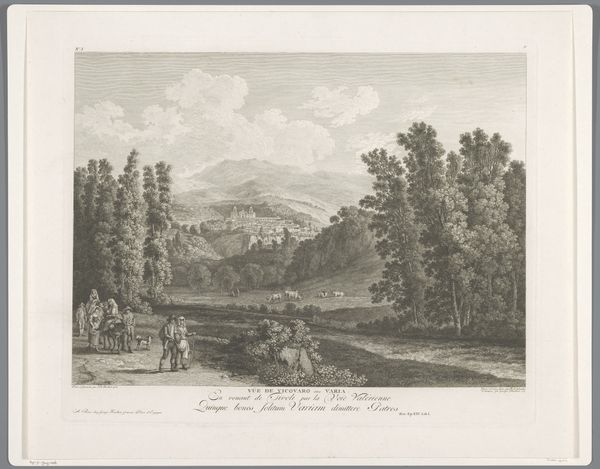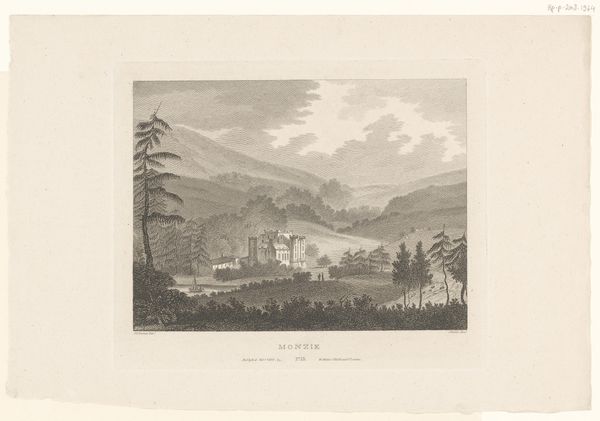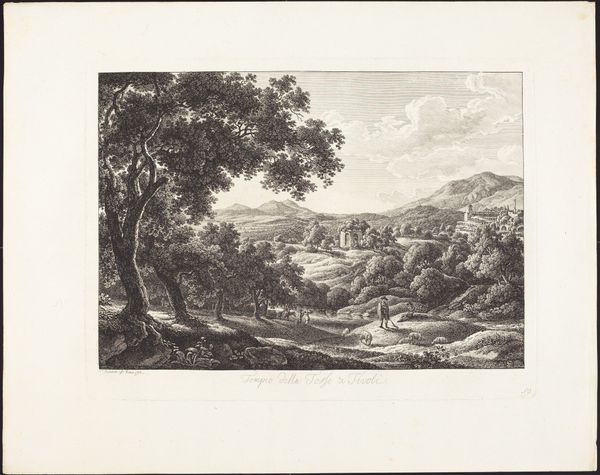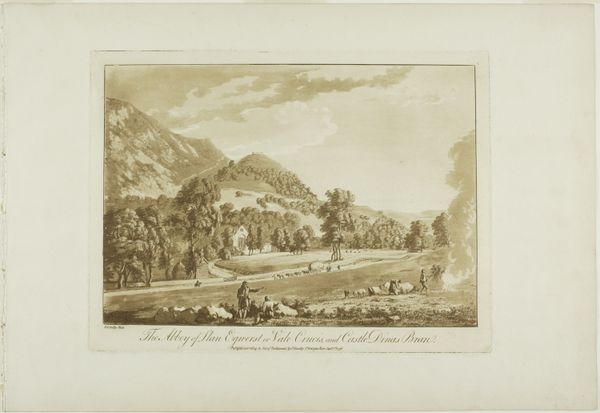
Dimensions: height 375 mm, width 460 mm
Copyright: Rijks Museum: Open Domain
Curator: Looking at "Gezicht op Cantalupo Bardella in Mandela" by Balthasar Anton Dunker, dating from between 1780 and 1805 and held at the Rijksmuseum, I’m immediately struck by how serene the etched landscape feels, like a carefully constructed stage for rural life. Editor: Yes, but staged with such an exacting technique. The tight, controlled lines and meticulous rendering of the landscape read to me not so much as pastoral idealism, but as a kind of documentation of land and labour—particularly given it is etching and engraving combined. We see the land and, simultaneously, the work it asks from the figures present within. Curator: The etching, used alongside engraving, allows for a great range of textures, from the rocky outcrops to the distant mountains. But I am not convinced that the work of the figures is presented so overtly. Dunker organizes the planes, the distribution of dark and light to direct our view to the vista—more picturesque than critical, perhaps. What do you think the decision to include these figures in the foreground signals to viewers of that era? Editor: The foreground's activity contrasts sharply with the receding, monumental landscape. Think about the economy of the print medium itself, the copper plates carefully worked. The means of production highlight this connection. The choice to place laborers so distinctly into the scene does point to the backbreaking demands levied on ordinary people within these locales. What's crucial here, then, is less whether Dunker sought to explicitly critique conditions, but the conditions made materially evident. Curator: It's a delicate balance, isn’t it? While your reading opens the landscape to consider the impact of the mode of production, it also is hard to escape the sense of harmony and idealization in this artwork, especially since landscapes during that time, often borrowed visual vocabularies and symbols that appealed to aesthetic ideals or the sublime, right? Editor: Certainly! A complex interaction happens, though: through those labor-intensive print processes, Dunker isn't just offering an uncritical perspective of sublime harmony. Dunker acknowledges, maybe unknowingly, the structures upholding idealized visions. Even by visually contrasting the grandeur with workers shown alongside animals and materials scattered across the ground in the front—the division of labour made visibly and inescapably plain. Curator: It's a fascinating lens through which to reconsider the artwork’s historical importance and aesthetic dimensions together. Editor: Exactly, examining the materials, labor, and production unveils those tensions within an outwardly peaceful vista.
Comments
No comments
Be the first to comment and join the conversation on the ultimate creative platform.
